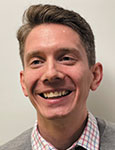 Exploring new hobbies and earning new certifications can stimulate the mind – and your career.
Exploring new hobbies and earning new certifications can stimulate the mind – and your career.
I like to think that my hobby is learning new things, or maybe it’s just an instinct for engineers. If you ask my wife, maybe that is just a mask for the adage that my hobby is collecting hobbies, which frequently necessitates learning new things. Some hobbies have significant barriers to entry, such as the financial obligations for equestrian activities, while others have more intellectual requirements, like amateur radio, also known as ham radio.
Recently I jumped into ham radio, getting my technician license – also called a ticket – and a handheld radio. For years friends in the PCB industry asked me if I was into amateur radio before I finally looked at it seriously. A few months ago, a friend and coworker got really excited about it, and he assured me that given my electrical engineering background and understanding of signal integrity, the test would be a breeze. In short, it was.
As an electrical engineer, with a significant understanding of transmission lines and electromagnetic fields, the hardest part of the technician license was learning the regulations. This truly seems like a hobby geared for electrical engineers to be able to apply technical knowledge outside of a work environment. While some of those I have already met in my local club are EEs, however, others have gotten into it for other reasons. One of the common reasons is for individual and community emergency preparedness. Various organizations in ham radio provide emergency communication services, such as Radio Amateur Civil Emergency Service (RACES) and Amateur Radio Emergency Service (ARES). Others do it for the sake of connecting and communicating with people all over the world. In modern times, we can meet and talk on the internet through voice over IP (VoIP), which is now ubiquitous in business and everyday life.
Just as I had several within the PCB industry poke me about getting into ham radio, let me be one for you. Check it out: you might like it!
On the topic of continued learning and education, it was only a few months ago that I took the PCEA Training course and passed the exam to become a Certified Printed Circuit Designer, adding the CPCD letters after my name. The PCEA integrated this training material last year, and a growing number of graduates are passing the exam to demonstrate their knowledge and understanding of a solid engineering-based process for designing and laying out a printed circuit board.
At PCB East, I was discussing the curriculum with another electrical engineer who shared a background in silicon design, and it dawned on me that the core of the training material is similar to the education I received about silicon design – a top-down design, bottom-up implementation! If you understood that, great! If not, sign up for the class! Tongue in cheek! Or maybe do sign up! It is a proven methodology for large and difficult projects to break down the design process into manageable chunks to make methodical decisions while resolving localized issues, followed by integrating the design elements together at various stages and repeating the process.
The course offers a plethora of information ranging from basic electronics and schematics (early design) all the way through fabrication, assembly and test. Any engineer, even those who have spent their entire career in the PCB industry, will learn something in this course. It has the added benefit of allowing you to show others that you know what you are talking about in a practical sense. Some tests/certifications in the PCB industry are rote memorization-based; e.g. What are the plating requirement differences between a Class 2 and Class 3 board? But knowing information like that doesn’t help you understand why and when you would need to have a 10-layer board instead of an eight-layer board before doing layout. The CPCD course passes on the higher-level problem-solving and critical-thinking skills that are necessary to be successful as a designer.
Having completed the CPCD course and successfully passed the examination, one of the unexpected takeaways was the connections and friendships I made with my fellow classmates. We were only in class together for a few days, but I felt that I built good connections with those in my cohort, such that for at least some of them, I have continued to build friendships in which we aspire to fulfill the ethos of the training and of PCEA itself: Collaborate, educate and inspire.
Finally, I would encourage everyone who takes the CPCD course to take the exam. After all, that is the evidence that you understood the material and aligned with it enough to be able to demonstrate your understanding and ability to apply it.
Let me know if you want to try connecting with me on amateur radio or to talk more about the value of the CPCD course by emailing me at This email address is being protected from spambots. You need JavaScript enabled to view it..
Geoffrey Hazelett is a contributing editor to PCD&F/CIRCUITS ASSEMBLY. He is a technical sales specialist with more than 10 years’ experience in software quality engineering and sales of signal integrity software. He has a bachelor’s degree in electrical engineering; This email address is being protected from spambots. You need JavaScript enabled to view it..







 Exploring new hobbies and earning new certifications can stimulate the mind – and your career.
Exploring new hobbies and earning new certifications can stimulate the mind – and your career.




